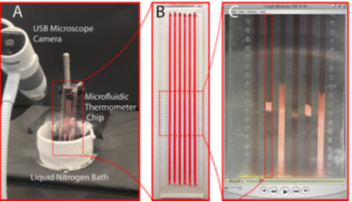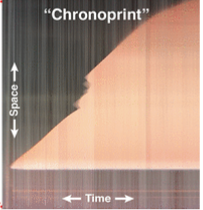Chronoprints: Identifying Adulterated Samples in Food and Drug Safety
Background
If there is a method that can determine if a drug or food has been adulterated or counterfeited just by looking at them, money and lives can be saved every year. This is especially true in the developing world where adulterated and counterfeit drugs and foods are rampant. Unfortunately, the technologies that can identify samples are expensive, energy-intensive, and largely unavailable in developing countries where they are needed the most. A technique developed to detect fake drugs or foods with ease and low cost is desirable.
Brief Description
Prof. Will Grover and his colleague at the University of California have developed a method to identify adulterated drugs and foods by observing how they behave when disturbed by temperature changes or other causes. Images of the sample’s behavior as it freezes over time are captured and processed into chronoprints. Chronoprints are fundamentally bitmap images of samples on a computer, and it is possible to leverage existing image analysis and comparison techniques that have been already developed to analyze Chronoprints.

Fig. 1 Producing a "chronological fingerprint" or chronoprint capturing how six samples (in this example, authentic and adulterated samples of an over-the-counter liquid cold medicine) respond to a perturbation over space and time (in this case, a rapidly changing temperature gradient). (A) A microfluidic thermometer chip containing the samples is partially immersed in liquid nitrogen to establish a rapidly changing temperature gradient along the chip. (B) The chip contains six samples (red) loaded in microfluidic channels that run parallel to the dynamic temperature gradient. (C) An inexpensive USB microscope records a video of the physical changes in the samples as they react to the dynamic temperature gradient.

Fig. 2 By reducing each channel image to a single column of pixels, and then placing these columns side-by-side, we create a bitmap image (the sample’s chronoprint) that captures how the sample changes over space (the y-axis) and time (the x-axis). Finally, by comparing the chronoprints of all six samples in the chip, we can determine whether the samples are either likely the same or definitely different.
Applications
- Chronoprints may be used to characterize and identify adulterated or counterfeit food and drug samples
Patent Status
| Country | Type | Number | Dated | Case |
| United States Of America | Issued Patent | 12,429,411 | 09/30/2025 | 2019-147 |
Additional Patent Pending
Related Materials
Contact
- Grace Yee
- grace.yee@ucr.edu
- tel: View Phone Number.
Other Information
Keywords
sample, identification, food safety, chronoprints, drug safety, microfluidic
